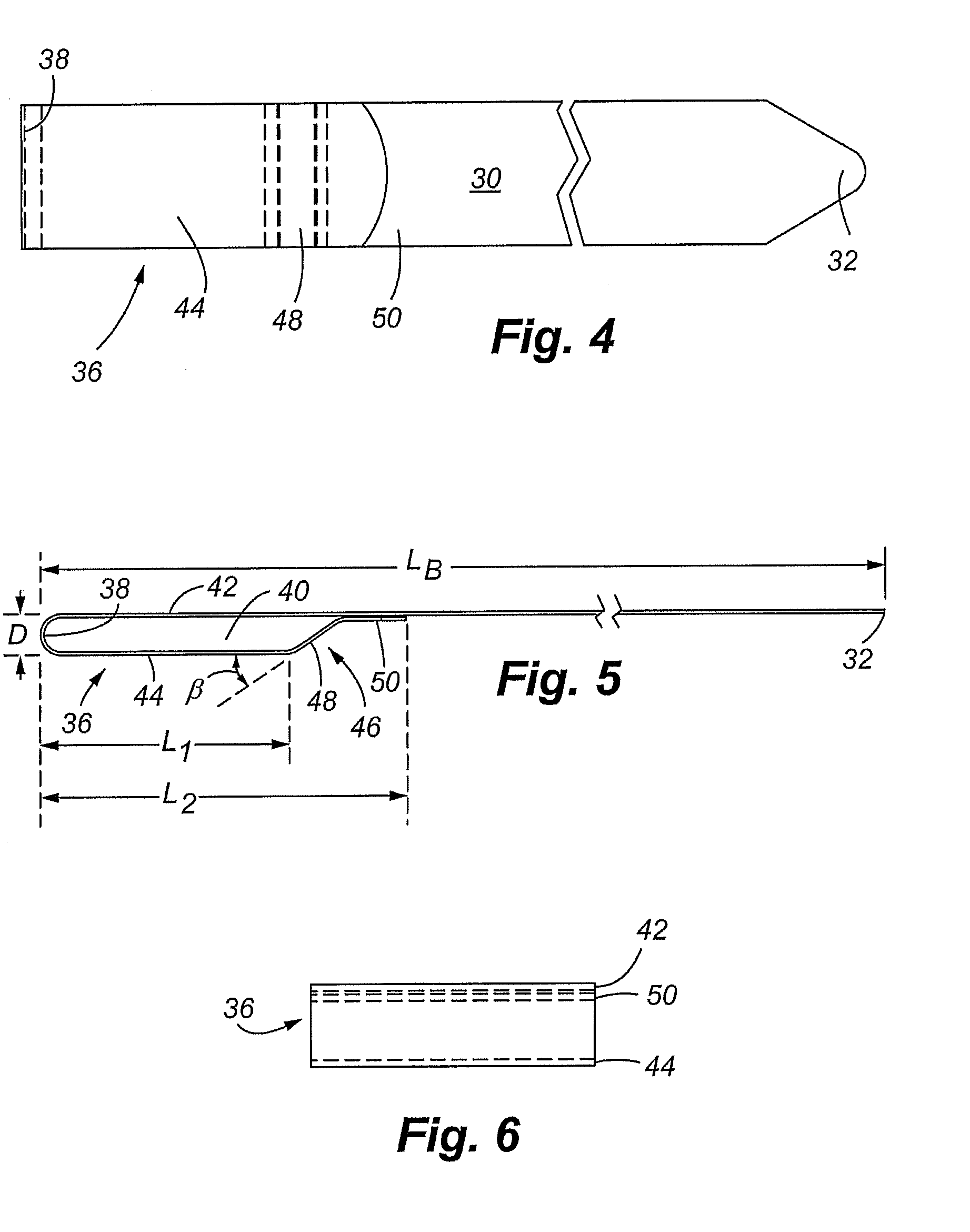Free end band
a free end and band technology, applied in the direction of hose connections, screws, applications, etc., can solve the problems of inelastically deformed bands, increased installation difficulty or complexity, and extreme environmental conditions in outdoor installations, so as to prevent waste of materials, reduce labor costs, and high strength
- Summary
- Abstract
- Description
- Claims
- Application Information
AI Technical Summary
Benefits of technology
Problems solved by technology
Method used
Image
Examples
Embodiment Construction
[0052]A preformed band 30 of one embodiment of the present invention is shown in FIGS. 4-6. The illustrated band shown is 1.25 inches wide, although depending upon the application, it may be narrower or wider. For example, it may be 0.75 inches wide or 1.5 inches wide. The band is approximately 0.030 inches thick, although depending upon the application it may be thinner or thicker. An acceptable range of band thickness is approximately 0.010 to 0.044 inches, and is preferably 0.030. A seal is shown in FIGS. 7-10B. Preferably, the band and seal are made of stainless steel or other materials capable of withstanding not only the tensile forces applied to the band to secure or restrain banded objects, but to also withstand a large range of environmental conditions. Examples of suitable materials include Inconel® 625, Monel® 400, and Incoloy® 27-7SMO made by Huntington Alloys Corporation and AL-6XN made by Allegheny Technologies, Inc.
[0053]As shown in FIG. 5, the length of the band 30, ...
PUM
 Login to View More
Login to View More Abstract
Description
Claims
Application Information
 Login to View More
Login to View More - R&D
- Intellectual Property
- Life Sciences
- Materials
- Tech Scout
- Unparalleled Data Quality
- Higher Quality Content
- 60% Fewer Hallucinations
Browse by: Latest US Patents, China's latest patents, Technical Efficacy Thesaurus, Application Domain, Technology Topic, Popular Technical Reports.
© 2025 PatSnap. All rights reserved.Legal|Privacy policy|Modern Slavery Act Transparency Statement|Sitemap|About US| Contact US: help@patsnap.com



